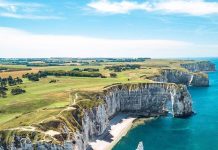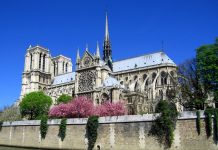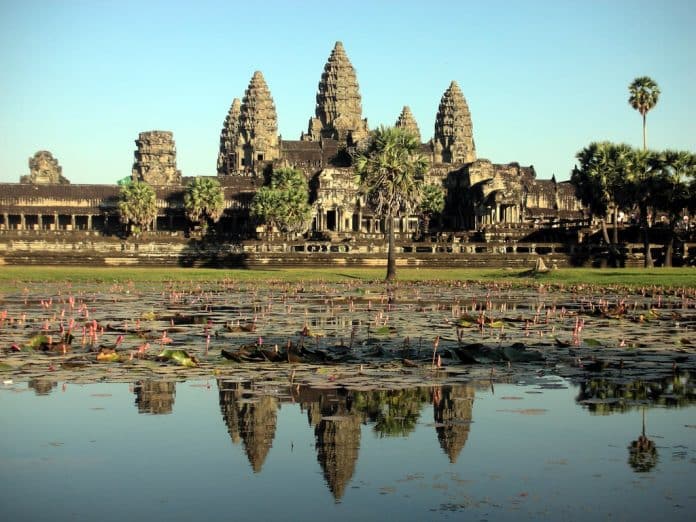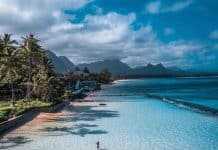Cambodia is a country that has been shrouded in turmoil and unrest for decades. The country and the Cambodian people have suffered immensely, especially during the late 20th century.
During the 1970s especially, the country and population suffered from the deadly and devastating Khmer Rouge and the Cambodian Genocide for which they were responsible. You can still see the ways the country is struggling to recover from this era today.
For all its struggles, Cambodia has prevailed in the wake of conflict and controversy. Blending ancient history with its undeveloped beauty, Cambodia is a remarkable yet inexplicable country to travel through. There is the constant feeling of never knowing what to expect, which makes visiting Cambodia that much more appealing.
The painful past has perhaps made the Cambodian people stronger. Slowly but surely, the country is moving towards a move stable political and economic scene. It’s been a roller coaster ride, but the Cambodian people have risen to the challenge each and every time.
Traveling in Cambodia
All the above (and much more) is important to understand before traveling to Cambodia. But don’t worry, if you go before you know (like I did), you’ll learn along the way. There are plenty of museums and sites dedicated to educating locals and foreigners on the country’s complicated history.
If you’ve only got one week, it’s possible to hit most of the main attractions. However, if you have the time, take it! You can explore all the smaller, lesser known places and discover what Cambodia is really all about.
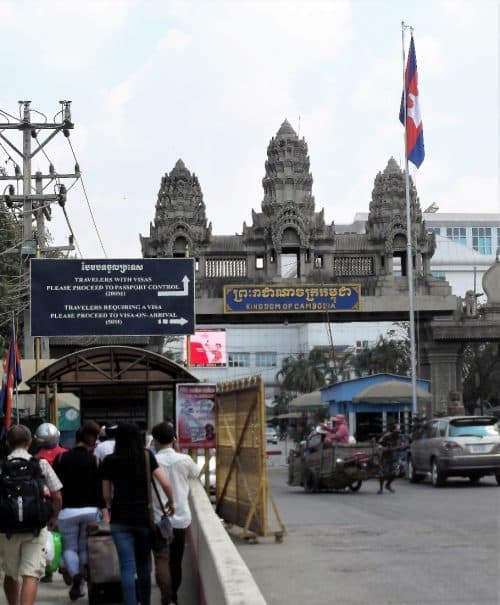 Travelers walking across the Thailand-Cambodia border.
Travelers walking across the Thailand-Cambodia border.
But for now, let’s start with the number one destination in Cambodia:
Siem Riep
Angkor Wat
Cambodia’s claim to fame and largest tourist attraction is undoubtedly Angkor Wat, located in the city of Siem Reap. The largest religious temple in the world represents the country’s ancient history like nothing else can.
FYI: Most people refer to the whole complex as Angkor Wat. In actuality, Angkor Wat is the name of the main temple that sits outside the gates. Angkor Thom is the proper name for the ancient city, including the site of the royal palace, that lies inside the gates.
Background
Built in the early 12th century by King Suryavarman II, Angkor Wat is a perfect example of classic Khmer-style architecture. Spanning over 400 acres, the temple complex housed roughly 100 temples as well as the royal palace and public buildings from which the Khmer dynasty ruled.
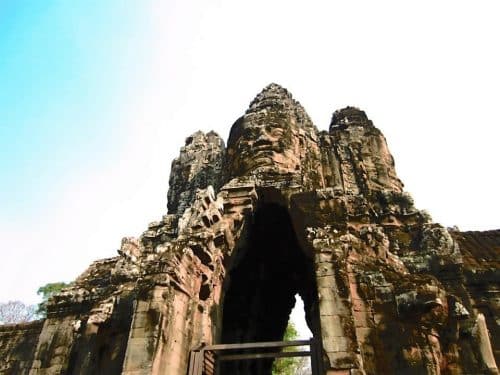
Although Cambodia is a Buddhist majority, the original monuments were built as Hindu temples and dedicated to the Hindu God, Vishnu. After the 12th century they were transformed into Buddhist temples.
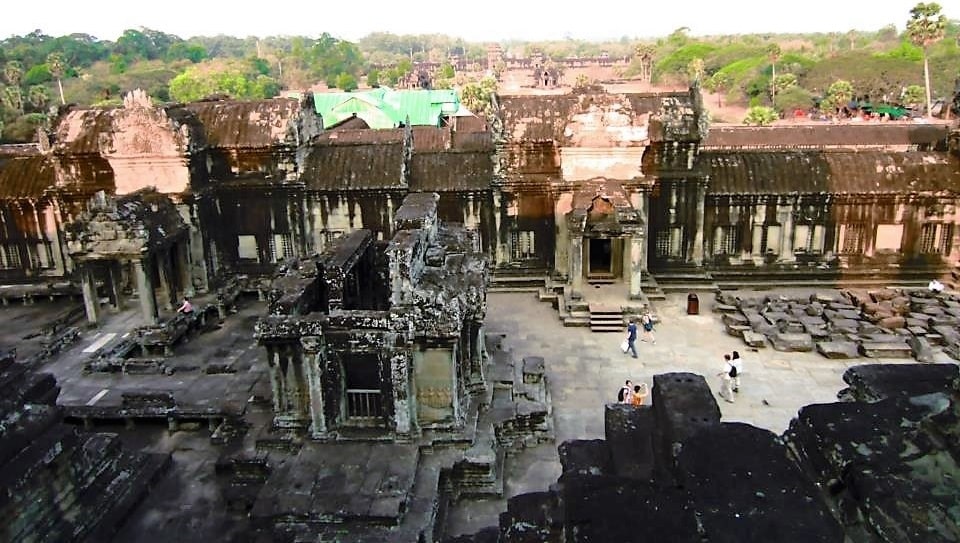
Declared a UNESCO World Heritage Site in 1992, the Cambodia people are so proud of Angkor Wat that they’ve even used the temple outline for their national flag.
Getting There
Most visitors of Angkor Wat stay in the city of Siem Reap, an awesome city with a lively backpacker culture. Much of the downtown targets this demographic with rows of bars with loud music and cheap drinks. If you’re traveling solo, you’ll meet some friends in this town.
From Siem Reap you can either rent a taxi or bicycle to get to the temples. We chose to rent bicycles the night before and woke up early the next morning to peddle to Angkor for sunrise. Angkor Wat sits facing west, so it’s pretty spectacular to see the sun rising behind the massive temples.
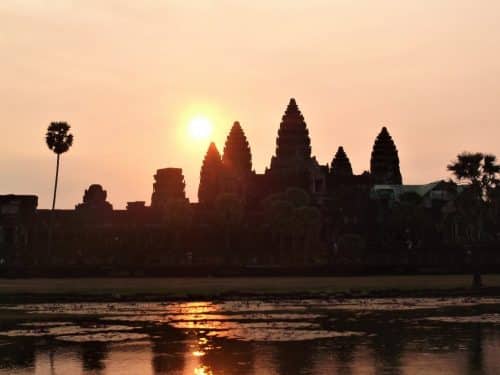
The Grounds
The temple complex is stunning. You truly feel like you are being propelled back in time. What it took to make such a magnificent compound is incomprehensible. The details and designs are painstakingly intricate and the size is staggering. The way the trees have grown around and on top of the temples creates a genuine, old world feel.
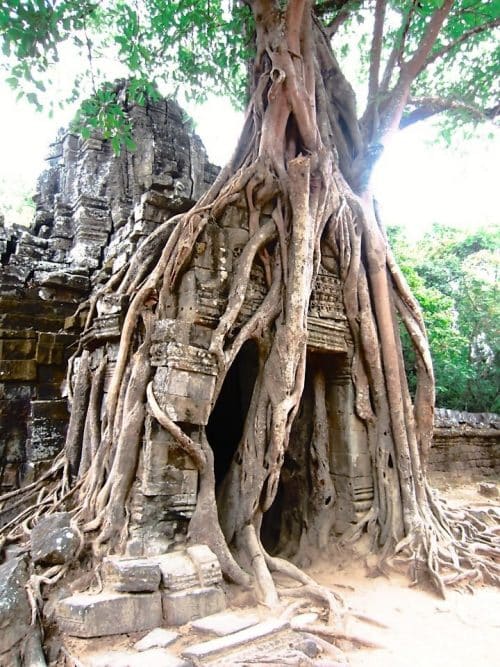
It’s highly recommended to hire a tuk-tuk to cart you around the grounds, or rent a bike from Siem Reap. Walking around will take far too long and there’d be no way to see everything in one day. Regardless of your mode of transportation preference, two days is recommended length of time to spend here.
The highlights other than Angkor Wat include: the city of Angkor Thom, Preah Khan, Bayon, and Ta Prohm, AKA the Tomb Raider Temple, the sight where Angelina Jolie filmed scenes from her famous movie.
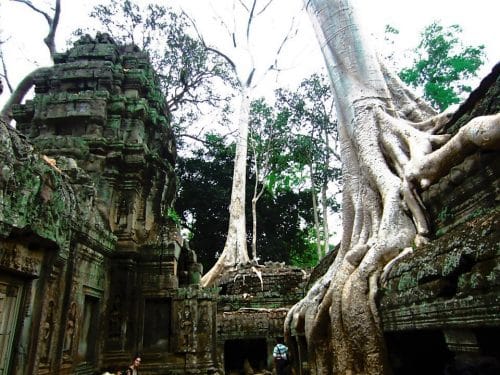
Phnom Penh
After soaking up a few days of temple ruins, the most common move for travelers is a 6-hour bus ride to the cultural, political, and economic center of the country.

Phnom Penh is a wild place. The atmosphere is electric, the vibe is intense, and there are very few rules. During the day, the dusty streets are buzzing with motorbikes and cars, markets spring up around every turn, and locals, foreigners, and ex-pats stroll the streets.
This is also the city where I experienced my first and last fish foot massage. It is as disturbing as it sounds. Tiny flesh-eating fish swarming my feet in a small pool of water and nibbling at the dry skin around my heels was not really my cup of tea. Thankfully the fish massage purchase included one free beer.
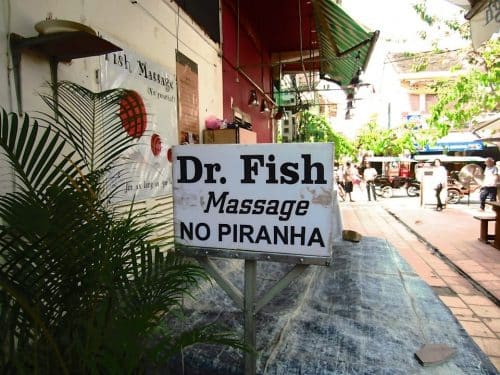
In the evening, the bars start warming up, the younger crowds turn out in hoards, and yes – the red lights turn on.
There are many more worthwhile activities to partake in, however calling the next few items “attractions” doesn’t seem right due to their horrific nature. Despite the disturbing subjects of the following sites, a visit to both is strongly encouraged in order to get a better idea of what Cambodia has endured.
Tuol Sleng Genocide Museum (S-21 Prison)
The abandoned Tuol Sleng High School became the site for the Khmer Rouge’s detention and torture chambers in 1975. For four years, the atrocities that happened here were meticulously documented until 1979, when Vietnam invaded Cambodia and defeated the Khmer Regime.
Pol Pot, leader of the Khmer Rouge, was determined to have a purely communist population. Educated people like teachers, doctors, and the religious were considered enemies of the state, rounded up, and brought to this prison.
The site has since been turned into a museum, including haunting photos of many of the victims, as well as torture devices. If wandering around the grounds doesn’t give you goosebumps, then nothing will.
One of the most depressing and darkest pieces of Cambodian history and not for the faint of heart.

The Killing Fields of Choueng Ek
The Killing Fields is an outdoor, walkable museum that tells the horror story of the Cambodian Genocide. It’s emotional, disturbing, and 100% deserving of a visit.
The Killing Fields is the site of the execution of over 17,000 men, women, and children who were tortured at the S-21 Prison. This place doesn’t hold back in the information or the displays, some of which are truly grotesque.
There’s a touching memorial outside of the site to which anyone can contribute. Trees and bamboo stocks adorned with woven bracelets pay homage to those who lost their lives here.
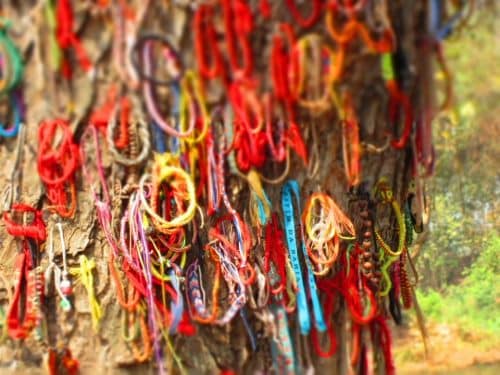
Admission includes a very informative audio tour, which tells the entire story from start to finish.
Sihanoukville
After Phnom Penh, it’s time for a complete change of pace and scenery. A 5-hour bus ride southwest will land you in Sihanoukville. This is a somewhat grungy beach town overrun with ex-pats. It’s known for its all-night parties and a chilled-out vibe.
The main beach is called Serendipity. You can find plenty of cheap hostels and accommodation options near here. It’s where the $1 drinks and thumping house music can be heard literally around the clock. If this is your scene, you’ll post up here for days.
Be prepared for seemingly sweet children trying to sell their trinkets on the beach. They can get pushy. There’s also always a few locals patrolling the beach with a big basket of fruit and snacks. Sliced mango at your service!
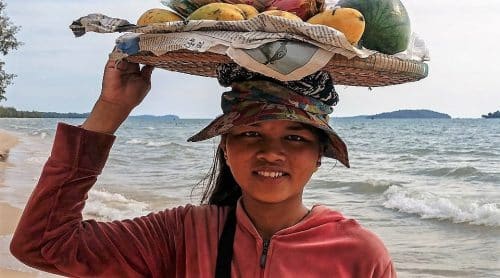
If serenity is what you’re after, rent a scooter and check out the other beaches of Sihanoukville. Otres and Independence Beaches are good choices and don’t have the same party vibe as Serendipity.
Island Getaway
It would be a big mistake to leave Sihanoukville without escaping to Koh Rong. This island is about 2 ½ hours off shore by slow boat or 45 minutes by speed boat. Boats leave every day from Sihanoukville.
Wow. When you arrive to Monkey Beach you’ll find it hard to believe such a blissful place could exist this close to Sihanoukville. This island is breathtaking; nothing like the grubby mainland. The clearest, light blue water you’ve ever seen lap the shores of the white sand that run straight into the dark green jungle. It’s simply paradise.
Many foreigners must feel the same way, because ex-pats essentially run this whole island. From the hostels to the bars, this place is a smorgasbord of nationalities with a common story: left home to travel the world, discovered Koh Rong, and never looked back.
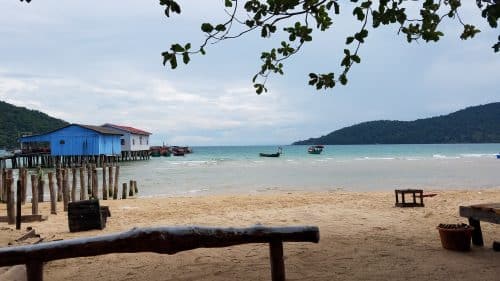
Several bungalows, small bars, and seafood BBQ restaurants line Monkey Beach. A fish dinner at one of these toes-in-the-sand joints is a must. A plate of grilled barracuda with two sides costs just $5.
There are no roads on Koh Rong. If you want to get from point A to point B, you do it the old-fashioned way. I highly recommended exploring this island. It’s refreshing to see that so much of it is still in its’ natural state.
The jungle is thick, and there is literally no development at all in the middle of the island. For all its beauty, Koh Rong is a very untouched place. Unfortunately, the construction seen on Monkey Beach suggestions a more developed future on the horizon.
If you think Monkey Beach is something special, just wait until you see the other side of the island. The 7km stretch of white sand known as Long Beach is a Utopia. It’s true you need to trek over an hour through the dense jungle on haphazardly mark trails, but it is SO worth it.
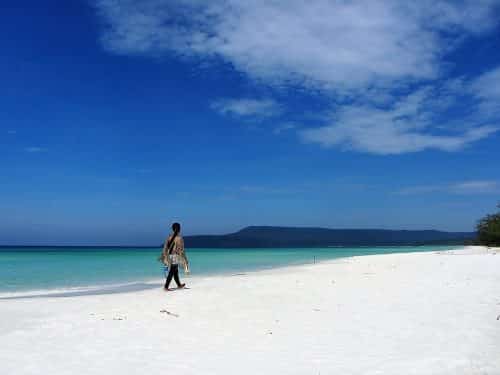
**********************************************************
Cambodia is a difficult country to describe. It’s dark and dirty and at the same time it’s beautiful and pristine. It has a somber and serious history and simultaneously has some of the best nightlife in Southeast Asia.
Visiting Cambodia for a week will only scratch the surface. You’ll likely feel that you’re leaving without discovering all its secrets, and you probably are. Cambodia doesn’t disclose everything in one go. That’s why you’ll need to return, and after a week here, I’m sure you’ll want to!

